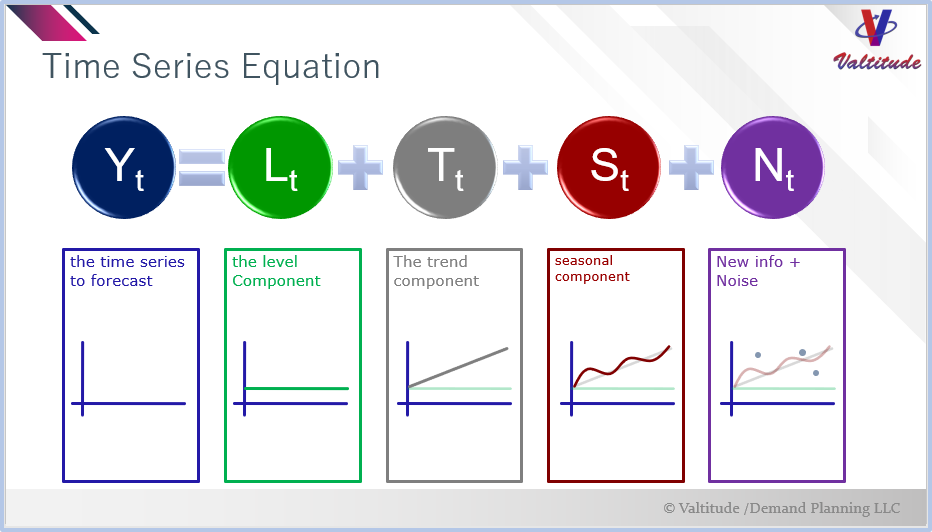Time Series Forecasting
Time Series models are simple yet powerful techniques available to develop supply chain forecasts. The cliché "History repeats itself" cannot be more applicable than in sales forecasting.
In Time-series modeling, we postulate that all we need is past values of the variable we are trying to forecast. So if we are trying to predict the demand for a specific product over the next six months, we use the monthly history of the product over the past two to three years. We ignore other factors such as price elasticity, promotional sensitivity, macro-economic activity, or Governmental policy changes or our own corporate policy decisions that we may be aware of.

Time series forecasts can be a good starting point before incorporating other causal effects. Time series methodology examines the past history for the following elements:
-
Historical Average: The level of sales that you have achieved on average
-
Trend: The growth or decline in Sales over time
-
Seasonality: The tendency for sales to either peak in specific periods or dip in specific periods during the week, month or the quarter. For example, You may have strong sales in the summer but weak sales in the spring and fall.
-
Cyclicality: Not very often, sales volume may go through and be affected by economic cycles. Typically, since supply chain forecasting is more focused on a time window less than one month, this is often ignored as a relevant factor affecting time-series forecasts.
-
Outliers: Sales may be subject to a one-time, sporadic event that may not be expected to repeat
Popular Time Series Techniques:
-
Moving average and growth models
-
Simple Exponential Smoothing
-
Winters Models
-
Holt-Winters Methodology
-
Simple Trend Seasonal Models
-
Logarithmic Models
-
ARIMA models
Click here to read more about Exponential Smoothing.